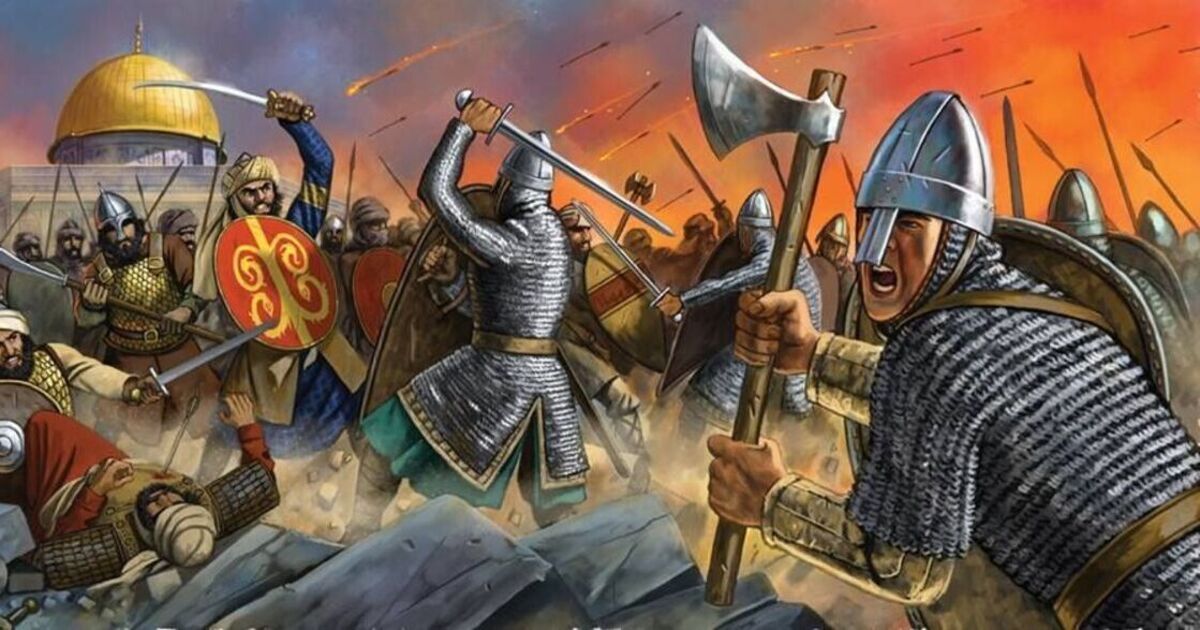
The Battle of Al-Fule stands as a significant event in medieval history, yet many remain unaware of its details. This clash, fought in 1183, saw the forces of the Kingdom of Jerusalem pitted against the Ayyubid army led by Saladin. Why does this battle matter? It marked a turning point in the Crusades, showcasing the strategic brilliance and resilience of both sides. The encounter took place near the village of Al-Fule, now in modern-day Israel. Understanding this battle helps us grasp the broader context of the Crusades and the enduring conflict between Christian and Muslim forces during that era. Dive into these 25 facts to uncover the pivotal moments, key figures, and lasting impact of this historic confrontation.
Key Takeaways:
- The Battle of Al-Fule was a significant clash during the Crusades in 1183, where King Baldwin IV and Saladin led their forces in a strategic and intense battle near present-day Israel.
- The battle ended in a stalemate, impacting the reputation of both leaders and setting the stage for future conflicts, including the famous Battle of Hattin in 1187.
The Battle of Al-Fule: An Overview
The Battle of Al-Fule was a significant clash during the Crusades. It took place in 1183 between the forces of the Kingdom of Jerusalem and the Ayyubid Sultanate. This battle is notable for its strategic maneuvers and the impact it had on the region's history.
- The Battle of Al-Fule occurred in September 1183.
- It was fought near the village of Al-Fule, located in present-day Israel.
- The Kingdom of Jerusalem was led by King Baldwin IV, also known as the "Leper King."
- The Ayyubid forces were commanded by Sultan Saladin, a prominent Muslim leader.
- The battle was part of the larger conflict known as the Crusades, a series of religious wars between Christians and Muslims.
Key Figures in the Battle
Understanding the key figures involved in the Battle of Al-Fule provides insight into the strategies and outcomes of the conflict.
- King Baldwin IV, despite his illness, was a skilled and determined leader.
- Saladin was renowned for his military prowess and chivalry.
- Raymond III of Tripoli, a prominent noble, played a crucial role in the battle.
- Balian of Ibelin, another notable Crusader, also participated in the conflict.
- The Ayyubid army included experienced commanders like Taqi al-Din.
Strategic Importance of Al-Fule
The location and timing of the Battle of Al-Fule were crucial for both sides, influencing their strategies and decisions.
- Al-Fule was strategically located near key trade routes.
- Control of the area meant dominance over the surrounding regions.
- The battle was part of Saladin's broader strategy to weaken the Crusader states.
- King Baldwin IV aimed to defend his kingdom's territories from Ayyubid incursions.
- The battle's outcome had significant implications for future conflicts in the region.
The Course of the Battle
The Battle of Al-Fule unfolded through a series of maneuvers and engagements, showcasing the tactical skills of both sides.
- The Crusader forces initially took a defensive position near Al-Fule.
- Saladin's army attempted to lure the Crusaders into open battle.
- King Baldwin IV's forces managed to hold their ground despite being outnumbered.
- The battle involved intense skirmishes and cavalry charges.
- Both sides suffered significant casualties, but neither achieved a decisive victory.
Aftermath and Historical Impact
The aftermath of the Battle of Al-Fule had lasting effects on the Crusader states and the Ayyubid Sultanate.
- The battle ended in a stalemate, with both sides withdrawing from the field.
- King Baldwin IV's health continued to deteriorate, affecting his ability to lead.
- Saladin's reputation as a formidable leader grew, bolstering his support.
- The battle demonstrated the resilience and determination of the Crusader states.
- It set the stage for future confrontations, including the famous Battle of Hattin in 1187.
Final Thoughts on the Battle of Al-Fule
The Battle of Al-Fule stands as a pivotal moment in history. It showcased the strategic brilliance of Saladin and the resilience of the Crusaders. This clash wasn't just about military might; it was a battle of wits, tactics, and sheer willpower. The outcome influenced the course of the Crusades and left a lasting impact on the region's history. Understanding these key facts helps us appreciate the complexities of medieval warfare and the significant figures involved. Whether you're a history buff or just curious, the Battle of Al-Fule offers a fascinating glimpse into a world where every decision could change the fate of nations. Keep exploring, and you'll uncover even more intriguing stories from our past.
Frequently Asked Questions
Was this page helpful?
Our commitment to delivering trustworthy and engaging content is at the heart of what we do. Each fact on our site is contributed by real users like you, bringing a wealth of diverse insights and information. To ensure the highest standards of accuracy and reliability, our dedicated editors meticulously review each submission. This process guarantees that the facts we share are not only fascinating but also credible. Trust in our commitment to quality and authenticity as you explore and learn with us.
